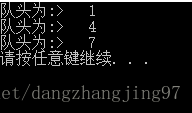栈的特性:先进后出
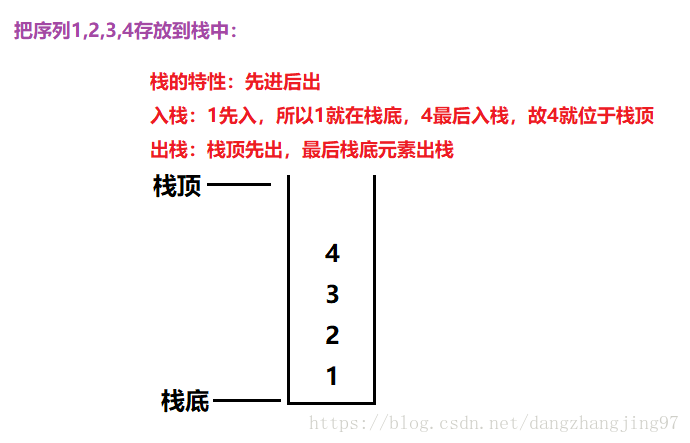
队列的特性:先进先出
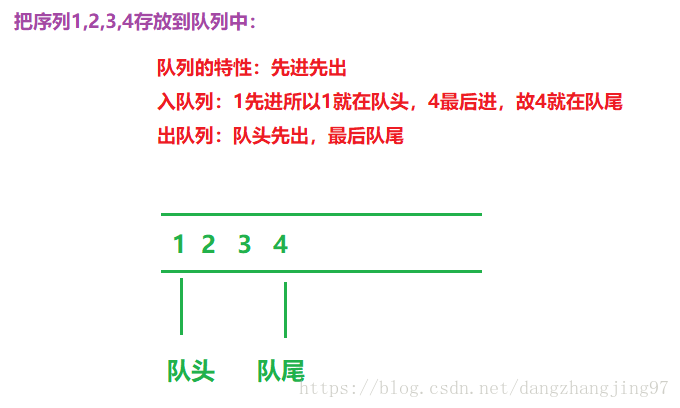
解析:使用两个栈来实现一个队列,其实就是组合两个栈,来实现队列,栈是先进后出,队列是先进先出,可使用以下操作使用栈来实现队列:
一、入队列:
把需要存放的元素插入到栈1中
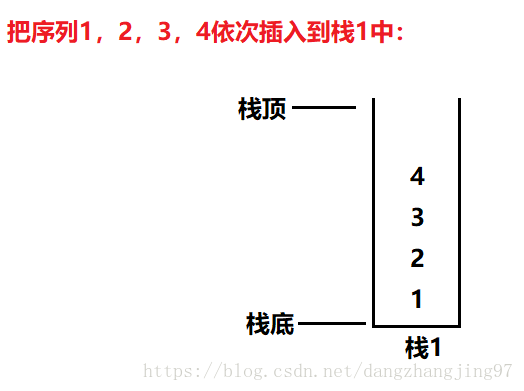
代码:
void push(const T&data){
stack1.push(data);
}二、出队列:
把栈1中的元素依次插入到栈2中
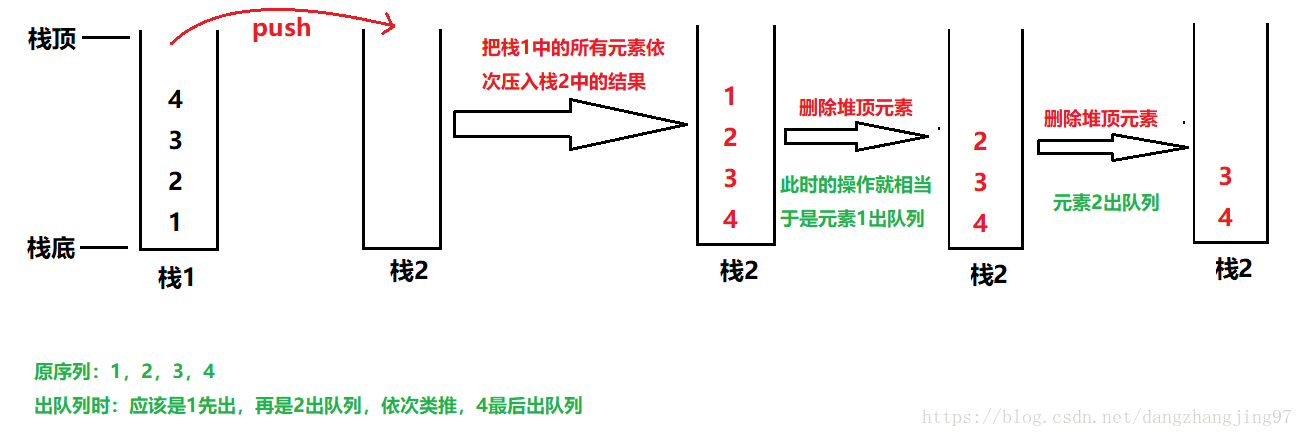
ps:此时栈顶元素就是需要出队列的元素
代码:
void Pop()
{
//如果两个栈都是空栈,此时说明队列是空的
if (stack1.empty() && stack2.empty())
cout << "this queue is empty" << endl;
//如果栈2中有元素,那出队列就出栈2中的
if (!stack2.empty()){
stack2.pop();
}
//此时表明栈2已是空栈,再要出队列的话,那就需要把栈1中的所有元
//素入栈到栈2中,注意一定要是栈1中的所有元素都入栈到栈2中
else{
while (stack1.size() > 0){
stack2.push(stack1.top());
stack1.pop();
}
stack2.pop();
}
}有返回值的Pop函数(此返回值为队头元素):
T&Pop()
{
T head;
//如果两个栈都是空栈,此时说明队列是空的
if (stack1.empty() && stack2.empty())
cout << "this queue is empty" << endl;
//如果栈2中有元素,那出队列就出栈2中的
if (!stack2.empty()){
head = stack2.top();
stack2.pop();
}
//此时表明栈2已是空栈,再要出队列的话,那就需要把栈1中的所有元
//素入栈到栈2中,注意一定要是栈1中的所有元素都入栈到栈2中
else{
while (stack1.size() > 0){
stack2.push(stack1.top());
stack1.pop();
}
head = stack2.top();
stack2.pop();
}
return head;
}三、获取队头元素
队列的队头位于栈2的栈顶
只要栈2不空,那就返回栈2的栈顶元素
如果栈2为空,那就把栈1中的所有元素全部压入栈2中,再取栈顶
T&Front()//获取队头元素,此时队头位于栈2的栈顶
{
assert(!stack1.empty() || !stack2.empty());
if (stack2.empty()){
while (!stack1.empty()){
stack2.push(stack1.top());
stack1.pop();
}
}
return stack2.top();
}源代码
#include<iostream>
#include<stack>
#include<assert.h>
using namespace std;
template<class T>
class Queue
{
public:
//入队列
void push(const T&data){
stack1.push(data);
}
//出队列
void Pop()
{
//如果两个栈都是空栈,此时说明队列是空的
if (stack1.empty() && stack2.empty())
cout << "this queue is empty" << endl;
//如果栈2中有元素,那出队列就出栈2中的
if (!stack2.empty()){
stack2.pop();
}
//此时表明栈2已是空栈,再要出队列的话,那就需要把栈1中的所有元
//素入栈到栈2中,注意一定要是栈1中的所有元素都入栈到栈2中
else{
while (stack1.size() > 0){
stack2.push(stack1.top());
stack1.pop();
}
stack2.pop();
}
}
T&Front()//获取队头元素,此时队头位于栈2的栈顶
{
assert(!stack1.empty() || !stack2.empty());
if (stack2.empty()){
while (!stack1.empty()){
stack2.push(stack1.top());
stack1.pop();
}
}
return stack2.top();
}
private:
stack<T> stack1;
stack<T> stack2;
};
void TestQueue()
{
Queue<int> q;
q.push(1);
q.push(2);
q.push(3);
q.push(4);
q.push(5);
cout << "队头为:> "<<q.Front() << endl;
q.Pop();
q.Pop();
q.Pop();
cout << "队头为:> " << q.Front() << endl;
q.push(6);
q.push(7);
q.push(8);
q.push(9);
q.Pop();
q.Pop();
q.Pop();
cout << "队头为:> " << q.Front() << endl;
}
int main()
{
TestQueue();
system("pause");
return 0;
}运行结果:
Pop函数中返回队头元素时的源代码
#include<iostream>
#include<stack>
#include<assert.h>
using namespace std;
template<class T>
class Queue
{
public:
//入队列
void push(const T&data){
stack1.push(data);
}
//出队列
T&Pop()
{
T head;
//如果两个栈都是空栈,此时说明队列是空的
if (stack1.empty() && stack2.empty())
cout << "this queue is empty" << endl;
//如果栈2中有元素,那出队列就出栈2中的
if (!stack2.empty()){
head = stack2.top();
stack2.pop();
}
//此时表明栈2已是空栈,再要出队列的话,那就需要把栈1中的所有元
//素入栈到栈2中,注意一定要是栈1中的所有元素都入栈到栈2中
else{
while (stack1.size() > 0){
stack2.push(stack1.top());
stack1.pop();
}
head = stack2.top();
stack2.pop();
}
return head;
}
T&Front()//获取队头元素,此时队头位于栈2的栈顶
{
assert(!stack1.empty() || !stack2.empty());
if (stack2.empty()){
while (!stack1.empty()){
stack2.push(stack1.top());
stack1.pop();
}
}
return stack2.top();
}
private:
stack<T> stack1;
stack<T> stack2;
};
void TestQueue()
{
Queue<int> q;
q.push(1);
q.push(2);
q.push(3);
q.push(4);
q.push(5);
cout <<"队头为:> "<< q.Pop() << endl;
cout << "队头为:> " << q.Pop() << endl;
}
int main()
{
TestQueue();
system("pause");
return 0;
}
ps:是先返回队头,然后在Pop的,所以第一次输出队头为1,第二次输出队头为2
